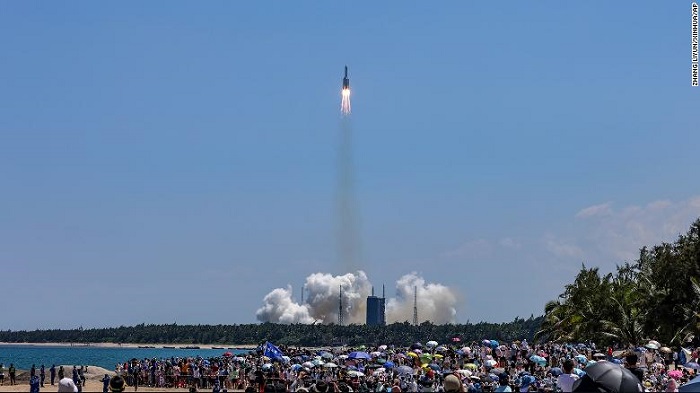The Wentian module was launched from Hainan Island on Sunday at 2:22 p.m. local time aboard the Long March 5B rocket.
As China’s largest ever spacecraft, Wentian weighs 23 metric tonnes and is outfitted with four science cabinets for a variety of ecological and biotechnological studies. It also has a robotic arm that may be used for exterior research, as well as an auxiliary airlock.
To be completed by late 2022, Chinese engineers will dock the three-module Tiangong space station they’ve been working on since 2011.
The Tianhe module, the space station’s primary living quarters, was launched in April of last year. Mengtian, China’s next second laboratory module, is scheduled for introduction in October. Tianhe will be in the middle of a T-shaped structure formed by the two lab modules.
The Shenzhou 14 crew of three Chinese astronauts docked with the International Space Station on Monday.
After the International Space Station, Tiangong is the world’s second functioning orbiting outpost (ISS).
As a result of US political opposition and legislative limits, Chinese astronauts have long been barred from the International Space Station (ISS). Russia, another major supporter of the ISS, has also pulled out.
After launching its first module on a Long March 5B rocket last year, China was harshly chastised for its handling of space debris.
Ten days after the launch in May of last year, the rocket’s remains made an uncontrolled re-entry and fell into the Indian Ocean near the Maldives.










